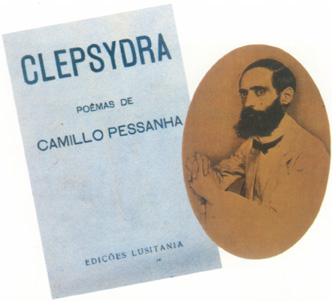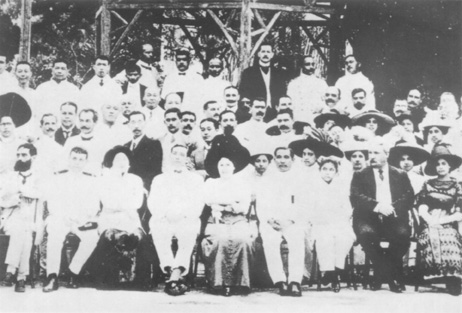
Poets are frequently remembered when the anniversary of their birth or death comes round, just like the great political figures whose feats have been written into the history books.
It would be even better if poets were to be commemorated through their work for it is this which has made them famous. Disgraced by fortune, damned with genius, it seems that "one book" poets are at least rewarded by the fact that people remember the date of their master work.
António Nobre, Cesário, João de Deus, Florbela were all "one book" poets as were (almost) Mário de Sá Carneiro and (during his lifetime) Fernando Pessoa and Camilo Pessanha.
Pessanha, more than any of the others, paid the price of exile in Macau. Pessanha turned his back on the Portuguese capital, a city which irked a man who would not participate in its artistic social life and fled from literary parochialism.
The incense burner, which over the last decades has smouldered in the pantheon of Portuguese literature in honour of Fernando Pessoa has not, however, entirely excluded the chance for Florbela Espanca and Mário de Sá Carneiro to be honoured in their own right. Still, Camilo Pessanha was not placed on as sufficiently high a pedestal as would have been just. A rapid suicide always makes more of an impression than a long, drawn-out death. The gods favour those who die young.
As if there were nothing more to be researched in their works, literary critics have plunged into the depths of poets' lives, sometimes exposing intimate details which throw no new light on their work and transcend their condition as persons in need.
Camilo de Almeida Pessanha has stood at the edge of this biographical trend due to his exile in Macau.
 Reception given by Dr. Sun Yat Sen in 1912. On the far left of the front row sits Camilo Pessanha
Reception given by Dr. Sun Yat Sen in 1912. On the far left of the front row sits Camilo Pessanha
There is now a trend in Macau of confirming the territory's role as "host" and consequently legitimate "owner" of the poet. The 70th anniversary of the first edition of Clepsidra has been marked by a series of cultural events which have served to make his work clearer, more complete and accessible as well as revealing his personal life. We now have a portrait which had for long been diluted in the scanty accounts which came after his death.
A collection of these accounts of both the poet and his work has just come off the press in a joint edition published by the Instituto Português do Oriente and the Instituto Cultural de Macau entitled Homenagem a Camilo Pessanha. Its only fault lies in its modesty for it should really stand in the ranks of the In Memoriam which have already been dedicated to other great Portuguese authors.
The man who has done the research and writing of this anthology is Daniel Pires. He has also been the motivating force behind the programme of events sponsored by the two organisations mentioned above.
Daniel Pires is preparing a further four books for the press: Camilo Pessanha, Prosador e Tradutor and Camilo Pessanha, A Imagem e o Verbo (a photobiography of the poet), a collection of correspondence and a critical edition of Clepsidra.
Two exhibitions were held at almost the same time: one by Pedro. Barreiros of paintings inspired by titles from Clepsidra and another biographical and bibliographical exhibition organised by Daniel Pires including autographed manuscripts, poems, letters, files, notes, biographical documents and rare and unpublished works. Macau played host to conferences given by António Dias Miguel, Arnaldo Saraiva and António Braz de Oliveira and three seminars in which these specialists participated.
RC has decided to associate itself with these commemorations in an attempt to allow this little known material to reach a wider public by devoting part of this and future issues to the author of Clepsidra.
We shall begin with the publication of a facsimile of Camilo Pessanha's Caderno de Poemas, also known as the Caderno Negro because of the black oilcloth covers the poet used to bind his small collection of poems he had written and corrected. This collection is now held in the Macau Historical Archives.
This is not an entirely unpublished work as can be understood from the history of the Caderno which appears in Manuel Coelho's Introduction to the Education Department's edition of 1986: The early life of the Caderno has been given to us by Mr. Danilo Barreiros in his work Inéditos (Unpublished Works), Camilo Pessanha's Caderno was published in the magazine Persona nº 10 in July 1984 and which shall be transcribed here by permission:
Only as I was about to leave Macau at the end of the war around thirty eight years ago were my efforts crowned with glory for I "discovered" in Macau's Public Library a notebook consisting of twenty eight pages measuring 21.5 x 19.5 with a black oilcloth cover under inventory number 3358. There were several blank pages and others were missing while the rest consisted of scraps of various poems which had been liberally corrected and annotated by the poet.
The notebook also has some manuscript poems, two of them written in pencil ("Cristalizações salinas" and "Nesgas agudas do areal") which were unpublished.
Camilo Pessanha gave, or more probably lent, the notebook to Dona Laura Castel Branco and after the poet died she decided to endow the Library with this valuable document.
The absence of photocopying machines and the impossibility of taking the notebook out of the Library to photograph it in a studio (we still did not have modern photographic equipment) meant that I copied out the texts and corrections myself. Later on, when I wanted to publish the material and in view of the defects of my own reproduction I requested photocopies (as machines had been bought by that point) from the Chief Librarian of Macau, the distinguished researcher Luís Gonzaga Gomes. I was shocked to find out that there wasn't the least trace of the Caderno. It was only in 1967, after Chinese students in Macau had attacked and ransacked the Leal Senado and Library that the notebook was found again. It was lying forgotten in the drawer of a cupboard which had been thrown over a balcony onto the street below...
My friend Gomes immediately sent me the photocopies which are reproduced here and should certainly be of interest to anybody who in interested in producing a critical edition of Pessanha's entire poetical output. Pessanha frequently reworked his early pieces in search of ever greater perfection.
The second story is more recent. It dates from 1984. The move to restore order in the National Library of Macau included renovations to the building along with far-reaching internal reorganisation. The first stage involved the head offices on Avenida Conselheiro Ferreira de Almeida while a second stage dealt with the former premises of the Leal Senado Library where the history library was to be installed.
When the books and papers were being put in order before work began on the Leal Senado Library, the librarian Maria da Graça Jácome Correia had some problems trying to open the drawers of an old desk. Fortunately she persisted, for inside lay the black covered notebook belonging to Camilo Pessanha, teacher, lawyer, curator, judge, a Jack-of-all-trades in this land.
RC reprints, on the following pages, the article written by José Augusto Seabra to introduce what he describes as "a tiny colletion of poems worked in filigree".
The reproduction offered in this issue of RC is intended to give readers the impression of holding the original work itself, and to offer researchers access to material which will help them carry out their analysis of Camilo Pessanha's work..
start p. 133
end p.